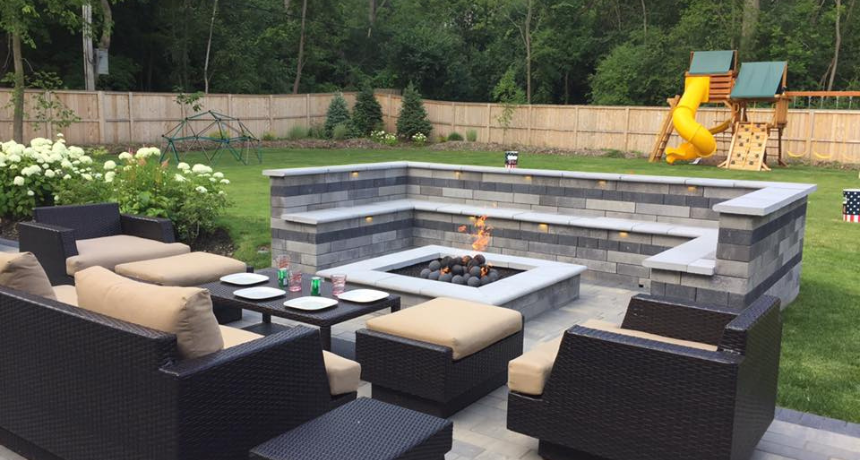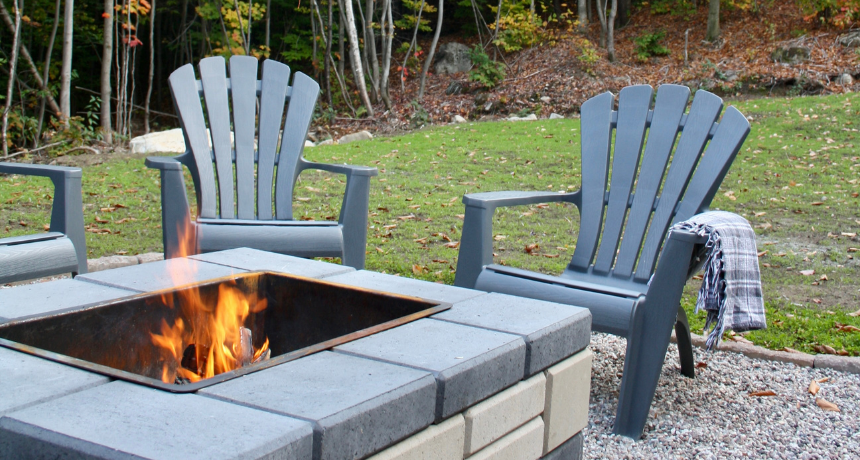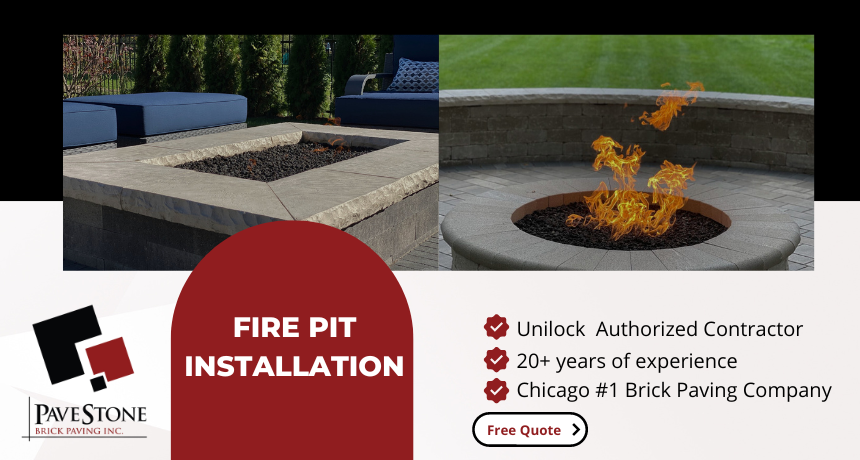Lighting up the fire pit for an evening outdoors with friends is a relaxing way to end the week. But when the fire creates excessive smoke, air is harder to breathe, eyes become irritated, and foul smells engulf the air. You can reduce fire pit smoke with these 10 tips.

Why does the fire pit smoke?
A smoky fire pit is an unenjoyable experience. The good news is that the unwanted smoke can be avoided. For example, if the fire fails to burn hot enough, more smoke emanates from the flames. Homeowners should create a fire that reaches its maximum heat level for best results.
Dry firewood produces less smoke than wet or fresh wood. This is because the flames focus more on evaporating the moisture than burning the wood. Since the moisture content of the wood is critical, check it with a moisture meter purchased at a hardware shop.
A fire pit needs plenty of ventilation to avoid creating excessive smoke. If the natural airflow is blocked, the smoke has no escape route and fills the pit. A fire producing limited smoke requires the ability to draw in fresh oxygen, so keep the fire pit clean and well-ventilated.
An unclean fire pit filled with ash and debris from prior fires creates the perfect conditions for excess smoke. Finally, starting a fire with the wrong type of fuel causes more smoke. When a fire pit is designed to use wood as fuel, avoid igniting the fire with gasoline.
How is smoke reduced in a fire pit?
1. Maintain the fire pit
A clean fire pit emits less smoke. After every use of the fire pit, clean out the accumulated ash and debris. Too much ash or pieces of firewood block the airflow and increase the amount of smoke produced. Keep a shovel or ash scoop handy to lift out excess debris.
2. Use dry firewood
Another culprit that creates smoke is wet or green firewood. Opt for seasoned wood, which is thoroughly dry and burns efficiently. It has a moisture content of less than 20 percent. Identify dry logs by looking for cracks, lightness, and sharp sounds produced when knocked together.
3. Use kindling
Build a slow fire with kindling, which involves using small pieces of wood to ignite the flames. Kindling ignites the fire quickly and allows larger logs to catch fire more rapidly. On the other hand, using large logs takes longer to catch fire and produces excessive smoke.
4. Use the right wood
The correct type of firewood makes a noticeable difference in smoke production. Hardwood is recommended for burning and softwood, like pine, for kindling. Avoid throwing grass clippings, leaves, or pine needles into the fire pit, as these fuels contain high moisture levels and create thick, toxic smoke.

5. Store wood properly
Maintaining a supply of dry wood requires proper storage. When possible, store firewood inside to protect it from rain and other elements. A garage does the same while permitting sufficient ventilation. If room inside is unavailable, consider a woodshed or store wood beneath a waterproof tarp.
6. Promote good ventilation
Adequate ventilation produces less smoke because air circulates the flames; conversely, obstructed airflow increases smoke production. Position the fire pit in a location that allows optimum ventilation and keep it away from objects that stop airflow, such as fences or wheelies.
7. Use a chimney starter
Burn a fire evenly with the help of a chimney starter. This device, consisting of a metal tube that holds charcoal, should be filled with crumpled newspaper and lit. Once the kindling is added and starts to burn, add coals for a fire that creates less smoke.
8. Stack firewood correctly
Good structure in the firewood is critical to avoiding excessive smoke. Reduce smoke by placing the logs in a teepee structure and shaping the kindling like a pyramid. More smoke is generated when logs are positioned too closely or too far apart.
9. Avoid adding too much wood
Adding too many logs to a fire pit creates a larger fire and hence more smoke. Ideally, only add a sufficient amount of firewood to get the flames going, then gradually pile on more to grow the fire. A well-managed fire only requires additional wood every few hours.
10. Install a smokeless fire pit
Enjoy a smoke-free night by the fire pit by opting for a smokeless design. This type of fire pit relies on natural gas or other fuel sources rather than wood or charcoal. Plus, a smokeless fire pit doesn’t produce ash, wood, or debris—so there’s less cleanup afterward.
Whether you settle on a traditional fire pit and use the abovementioned tips to reduce smoke or gravitate toward a smokeless fire pit, you’ll need quality fire pit installation. Pavestone Brick Paving, Inc, builds gorgeous fire pits of all types so you maximize the pleasure of your outdoor living space.

Our design team works with you to build a custom fire pit that matches your vision. Material options include Unilock brick pavers and beautiful natural stone slabs that are available in a multitude of colors, shapes, sizes, and textures. Alternately, we are equipped to install pre-built fire pits.
A striking fire pit, spherical in shape or square, can be the focal point of your backyard. Once it’s installed, rely on Pavestone to maintain it. Weather and natural wear can take a toll on a fire pit. Our team offers repairs, replacements and cleaning to extend its lifespan.
Beautify your outdoor living area with a fire pit constructed by Pavestone Brick Paving. Our experienced designers and builders match your home’s existing aesthetics so the fire pit blends in seamlessly. If you want to add a seating area and grill, our company can build these features, too.
Pavestone Brick Paving is the preferred fire pit installer for homeowners in Des Plaines, Illinois, and the surrounding suburbs. We are a Rochester Authorized Contractor who delivers efficiency, premium quality workmanship, and unparalleled customer service. Call our Des Plaines office today.














